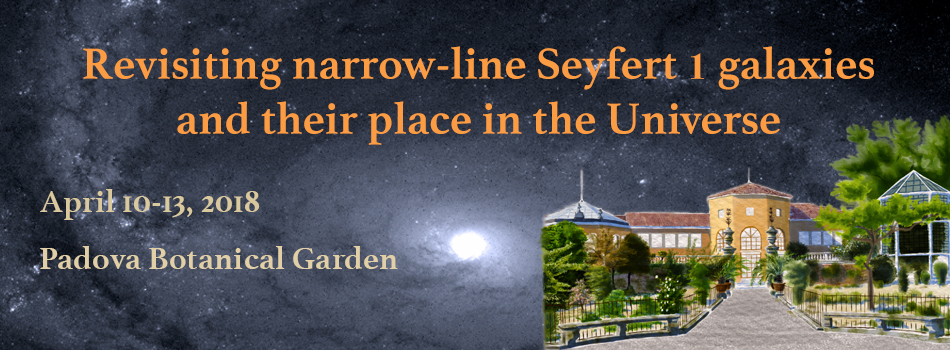The scheme planned includes invited review talks (40 min), contributed talks (20 min), and posters. During the third day, a one-hour session dedicated to Lucrezia Cornaro will be devoted to the topic of gender balance in astrophysics.
The schedule is organized in four main topics regarding narrow-line Seyfert 1 observational and physical properties, summarized as follows:
Day 1: optical properties of NLS1 galaxies.
The optical band is where the original NLS1 classification came from. During this session we will explore the most recent developments regarding observations in visible light of NLS1. Particular attention will be devoted to their spectroscopic properties, and what can they tell us about the gas behavior in the vicinities of the central black hole and in its surroundings. We will also discuss the results of new reverberation mapping campaigns that, by means of repeated observations, can provide precious details about the central engine properties.
Day 2: jetted NLS1s.
Ten years after the launch of the Fermi Satellite and the first detection in gamma-rays of PMN J0948+0022, we will devote an entire day to review and discuss the properties from radio to high-energies of NLS1s harboring relativistic jets. This peculiar class of sources drawn new attention to the NLS1 phenomenon, and it is still one of the most debated issues about these objects.
Day 3: the central engine.
During this session we will examine the properties of the central engine, from the accretion disk to the X-ray corona. In particular, we will focus on the information that X-ray observations can provide us, and how they reveal the behavior of matter in extreme environments.
Day 4: black hole and host galaxy.
This final session will be devoted to one of the most intriguing aspects of NLS1s, that is their black hole mass and its relation with the host galaxy. Thanks to infrared and optical observations, we will try to figure out whether NLS1s truly are different with respect to other AGN.

